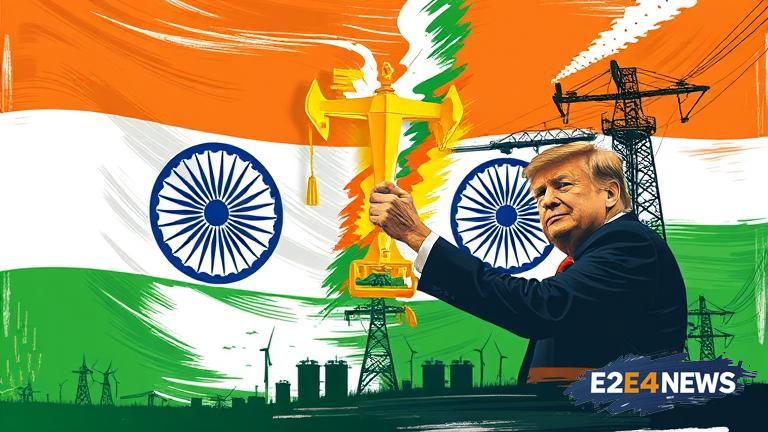The United States and India are engaged in a heated trade dispute, with the US threatening to impose a 25% tariff on Indian goods. This move is seen as a response to India’s growing trade deficit with the US, which has been a major point of contention between the two nations. The US has been pushing India to open up its markets and reduce trade barriers, but India has been reluctant to do so. Meanwhile, India has been increasingly turning to Russia for its oil and energy needs, which has raised concerns in the US about India’s growing dependence on Russian energy supplies. The ongoing war in Ukraine has further complicated the situation, with the US and its allies imposing sanctions on Russia and trying to reduce their dependence on Russian energy. India, however, has been able to negotiate a favorable deal with Russia, which has agreed to supply oil and energy to India at a discounted rate. This has led to a significant increase in India’s imports from Russia, which has in turn led to a decline in India’s imports from the US. The US has been trying to persuade India to reduce its dependence on Russian energy and instead opt for US supplies, but India has been hesitant to do so. The 25% tariff threat is seen as a way to pressure India into complying with US demands. The move has been criticized by Indian officials, who say that it will harm Indian businesses and consumers. The Indian government has vowed to retaliate against the US if the tariff is imposed, which could lead to a full-blown trade war between the two nations. The situation is being closely watched by other countries, including China, which has been trying to increase its trade with India. The US-India trade dispute has significant implications for the global energy market, as India is one of the largest consumers of energy in the world. The dispute could also have a major impact on the global economy, as India is a significant player in international trade. The US and India have a long history of trade tensions, but the current dispute is seen as one of the most serious in recent years. The two nations have been engaged in talks to try to resolve the issue, but so far, no agreement has been reached. The US has been pushing for India to reduce its trade barriers and open up its markets, but India has been reluctant to do so. The Indian government has said that it is willing to negotiate, but it will not compromise on its sovereignty. The situation is complex and multifaceted, with many different factors at play. The US-India trade dispute is not just about trade, but also about geopolitics and energy security. The US is trying to reduce its dependence on foreign oil and increase its energy exports, while India is trying to reduce its dependence on US energy supplies and increase its trade with other countries. The dispute has significant implications for the future of global trade and energy security. The US and India need to find a way to resolve their differences and work together to address the challenges facing the global economy. The current situation is unsustainable and could have serious consequences for both countries. The US and India have a lot to lose if they fail to resolve their trade dispute, including lost trade and investment opportunities. The two nations need to find a way to compromise and work together to address their differences. The US-India trade dispute is a complex and challenging issue, but it is not impossible to resolve. With diplomacy and negotiation, the two nations can find a way to resolve their differences and work together to address the challenges facing the global economy.
